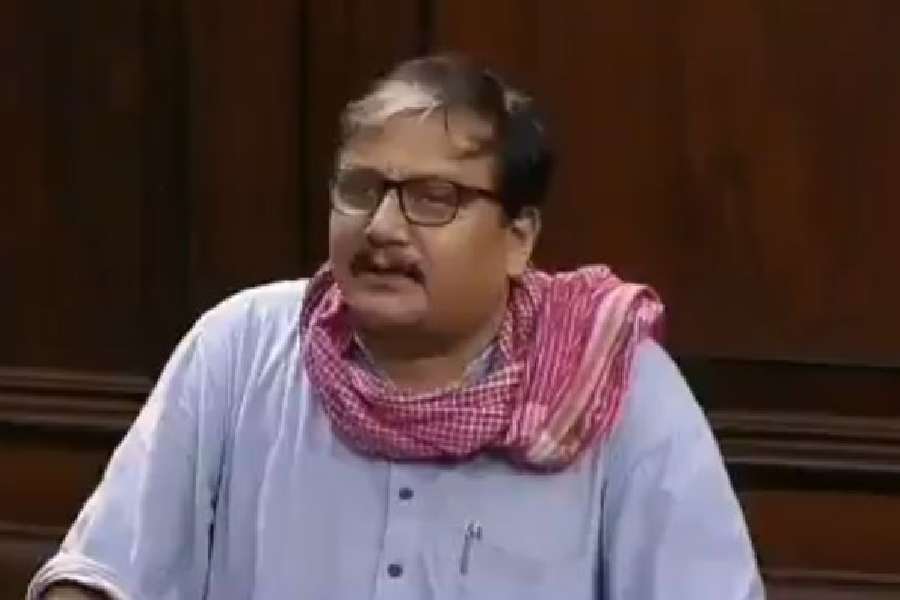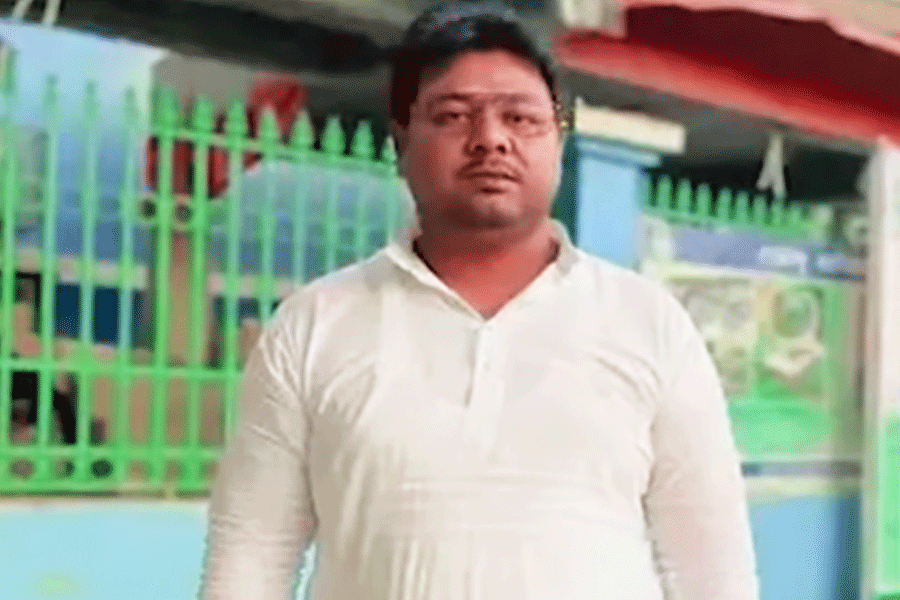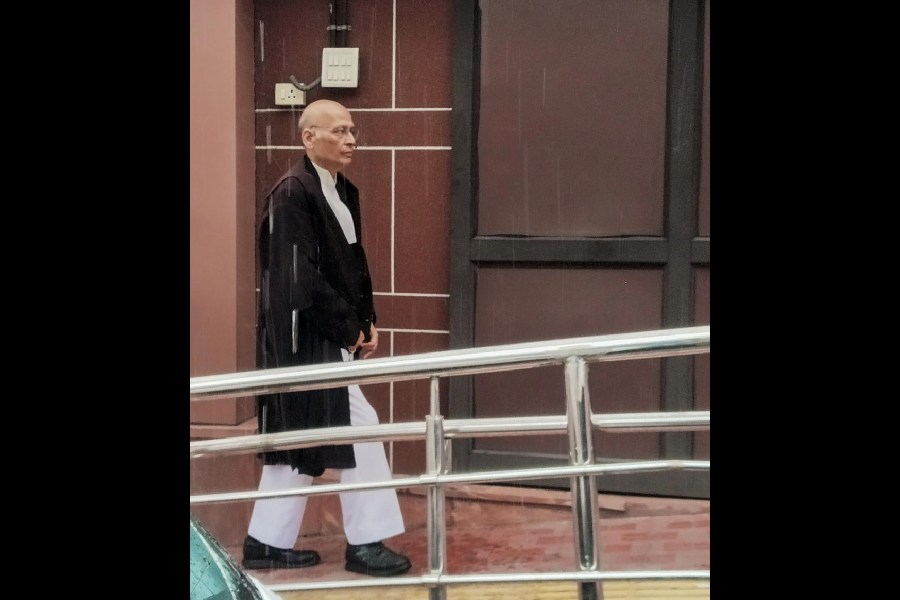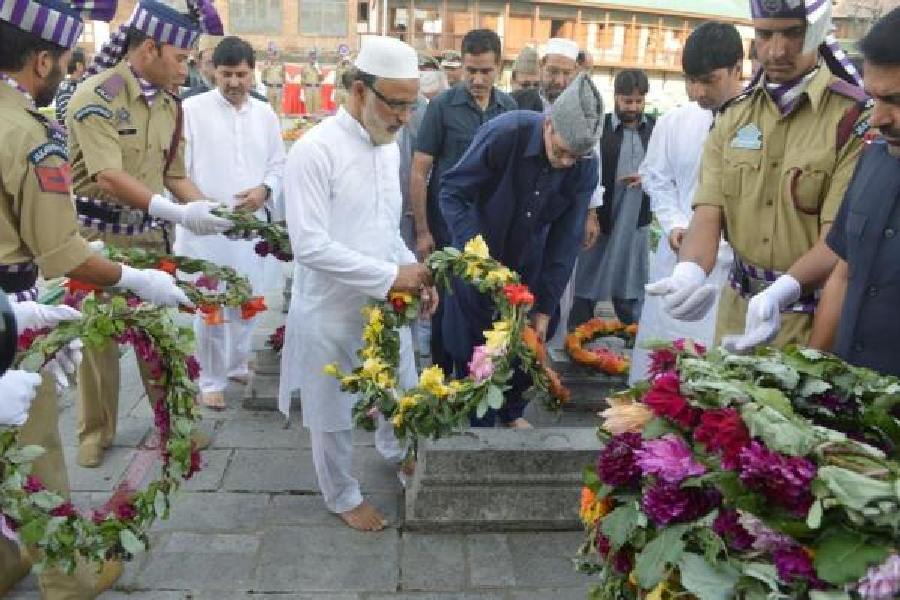
When prominent cricketers and established cricket writers rated Wriddhiman Saha as the best wicket-keeper in the world, a new chapter was added to the history of Bengal cricket. Never before has a Test cricketer from Bengal been regarded as the best in the world.
Pankaj Roy was a prolific performer for India in the 1950s. As an opener, he added 2,442 notches to the nation's run kitty for a healthy average of 33 with five centuries. Roy also held the first-wicket world record of 413 runs with Vinoo Mankad for decades. He did great service for India and received due recognition.
So did Sourav Ganguly, more than three decades later. Ganguly performed brilliantly as a batsman. More so as an exceptional leader of Team India. His polished stroke-play fetched 7,212 runs in 113 Tests at a distinguished average of 42 with 16 Test centuries. As an opener in limited-over cricket, he was consistency personified. Roy led India in a Test match at Lord's in 1959, whereas Ganguly was truly outstanding as a leader of men. His phenomenal success as captain, both at home and abroad, made a huge impression among the connoisseurs of the game.
But neither Roy nor Ganguly was ever ranked among the best players in their respective eras. That honour was destined for Saha, the wicket-keeper-batsman, who was in the shadow of the Indian skipper, M.S. Dhoni, for quite a while. With Dhoni's retirement from the Test arena, Saha earned the opportunity to showcase his talents. Donning the gloves on regular outings, Saha's actual worth was laid bare to the world at large. The quiet, composed gentleman went about his task in his inimitable way. He was the ultimate professional in the most appropriate sense of the word. His peers and critics were delighted to see that he achieved excellence without any fuss or mannerisms. His effortless glove-work reminded genuine followers of the game of Alan Knott and Bob Taylor, and old timers of Don Tallon. Neat and relaxed, effective and effortless, Saha took us back to the golden age when wicketkeeping was a specialist's job. In the last two decades, too many gloved men have masqueraded as wicket-keepers at cricket with disastrous results. In the multi-day Test matches, pretenders have been exposed totally.
In an era when a wicket-keeper's ability is considered secondary to his batting skills, Saha is a glorious exception. He has made it to the Test XI by virtue of his splendid glove-work. Although he is an excellent batsman, he still prefers his wicket-keeping to do the talking for him. The specialist wicket-keeper has never compromised on his wicket-keeping skills in spite of misguided advice to do the contrary. This faith in himself is his real strength.
Saha has now been rated as the best in the business. Some cynics, of whom there is no dearth in India, would claim that these rankings are entirely subjective and have no firm basis. Most certainly, ratings such as these have no statistical standard of evaluation. They are based on one's personal impression and well-considered opinion. However, what is to be noted is that the opinion is based not on hearsay or media publicity. The judgment is made by hardened professional cricketers and journalists who do not need to favour or fear anyone. They evaluate on the basis of what they see on the cricket field. They rely entirely on their experience and knowledge, impressions and integrity. Outstanding former cricketers, including the no-nonsense Australian, Ricky Ponting, have no reason to go overboard in their praise for a low-profile and composed cricketer such as Saha.
To be rated as the best in the world is a unique achievement by any yardstick. Saha's elevation to the summit is indeed a feather on the cap of Bengal cricket. In the last 85 years of Test cricket, Bengal has presented the nation with no less than 18 players, 12 of whom were locally nurtured. The other six came looking for greener pastures from other states. But Bengal's very own Saha happens to be the only one to have received the unofficial title of numero uno in world cricket.
The first cricketer to have played Test cricket from Bengal was not Sarobindu Nath ('Shute' Banerjee), as the Cricket Association of Bengal's 'roll of honour' would have one believe. Banerjee was representing Bihar when he made his official Test debut at the age of 37 against the West Indies at Brabourne in 1948-49. Despite capturing five wickets, he was never selected to play for India again.
Earlier, in 1947-48, Prabir 'Khokon' Sen went with Lala Amarnath's Indian team to Australia. He went as the reserve keeper, with Jamshed Khudadad Irani playing in the first two Tests. In the third Test at Melbourne, Sen made his debut, becoming the first cricketer from Bengal to play in official Test cricket. Sen went on to play 14 Tests, and was instrumental in India's first-ever Test victory in 1951-52 against England (then MCC) at Chennai (then Madras). He stumped five batters, all of the bowling of the mercurial all-rounder, Vinoo Mankad.
After Sen, the next player to play Test cricket from Bengal was Sudhangsu 'Montu' Banerjee, a superlative exponent of swing bowling. His first appearance for India was at the Eden Gardens against John Goddard's West Indies in 1948-49. Banerjee castled Denis Atkinson in his first over and went on to capture five wickets in the match. But, believe it or not, he was never selected to represent his country again. His debut coincided with his swansong.
In the following Test at Madras, Nirode 'Putu' Chowdhury, the medium pacer with a deceptive bouncer, became the third from Bengal in the Test arena. Chowdhury's Shoaib-Akhtar like bent-arm action horrified purists. His career did not go beyond two Tests. Prominent performers from other regions like Vinoo Mankad, Dattu Phadkar and C.S. Nayudu played in Tests for India while giving service to Bengal in the Ranji Trophy.
Between 1951 and 1961, Pankaj Roy dominated the scenario both for Bengal and for India. In his 43 Tests, the gutsy opener faced the lightning fury of Fred Trueman, Alec Bedser, Brian Statham, Alan Davidson, Fazal Mahmood, Wesley Hall, Roy Gilchrist, among others, with his head held high. He was the epitome of courage and concentration. He did Bengal and India proud with his exceptional application for the cause of the team.
Unfortunately, when Roy was still in his prime, he was omitted from the national team. The West Indies pace bowlers - Roy Gilchrist, Chester Watson, Charlie Stayers and Lester King - who had come to play in India's domestic tournaments in the early 1960s were unanimous in saying that Roy was still the best Indian batsman against genuine pace.
After Roy, it was the turn of Subrata Guha and Ambar Roy to hold high the banner of Bengal in international cricket. Both were outstanding performers in the domestic circuit. But they did not do justice to their talents at the international stage. Both figured in four Tests each in the late 1960s.
Guha had just three wickets at a bowling average of 103 and never looked the part. Neither did Ambar Roy, Pankaj's nephew. Ambar scored a mere 91 runs at an average of 13 and never appeared to be comfortable. But in his debut match at Nagpur against New Zealand, he played a whirlwind innings of 48 with 10 boundaries.
Then followed a decade when the Bengal cricketers did extremely well but went unrepresented at the official Test level. In 1979, at the age of 32, Dilip Doshi came into the limelight with the Indian captain, Sunil Gavaskar, specifically opting for his inclusion. Doshi did not disappoint. His maturity and pragmatism helped him to stay on course for 33 Tests till 1983. His 114 wickets, mainly on the docile pitches of the 1980s, reveal the man's exceptional spinning ability and determination against the odds.
In the early 1980s Pankaj Roy's son, Pranab, represented India in two Tests scoring 71 runs. Around the same time, another import from out-station was Delhi's Arun Lal. The determined opener finished his career of 16 Tests with an average of 26. The former Test batsman, Ashok Malhotra, from Haryana (seven Tests at an average of 25) also arrived in Bengal in the 1980s. But he never played Tests while representing Bengal, although CAB credits him of having done so.
The summer of 1996 heralded a new dawn in Bengal cricket. Sourav Ganguly went to England with Mohammed Azharuddin's team. Circumstances conspired to put the 24 year old at Number 3 for India in the Lord's Test. Ganguly took up the challenge in a magnificent manner, scoring a century on debut. He followed it up with another at Trent Bridge. Without any semblance of doubt, he happens to be the most successful of all the Bengal cricketers at the international level. Reams have been written on him to require any further elaboration.
While Ganguly was doing wonders, Devang Gandhi (four Tests at an average of 34) and the wicket-keeper, Deep Dasgupta, (eight Tests at an average of 29 with 13 victims) enjoyed short careers at the international level. Another import was Saba Karim. During the course of his debut against Bangladesh, he had problems with his vision and did not get the opportunity to last the whole match. In his only innings, he managed 15 and took one catch.
Saha made his debut under strange circumstances. He played his first match as a batsman and created an excellent impression with his batting and fielding skills. Since then, he has been a regular reserve bench player. Most pragmatically, he kept his mouth shut and his ears and eyes open. Today, he is proving his worth in no uncertain terms.
In 2013, Saha got Mohammed Shami for company in the India team. Although Shami made his debut in Test from Bengal, his early years were spent in Uttar Pradesh. He happens to be yet another migrant in the Bengal line-up.
Today, Bengal can take pride in having two players in the India XI. Both are doing well in their respective jobs. But Saha's exceptional glove-work has placed him on a high pedestal. He has achieved a position that has eluded other Bengal players at the Test level.
Saha's character is best exemplified by the fact that he has not forgotten his early coach, Jayanta Bhowmik. Although he has access to various well-meaning coaches today, Saha is truthful enough to accept that the person who knows him best is the portly opener who first showed him the basics and helped him reach the pinnacle. Kudos to Bhowmik for not following the herd instinct of placing batsmanship above the specialist skills of a wicket-keeper. Saha's manner and speech on and off the field have been exemplary. He has proved to all Indians that even an obscure town in North Bengal can produce world champions. He is an ideal role model for India's young talents.










